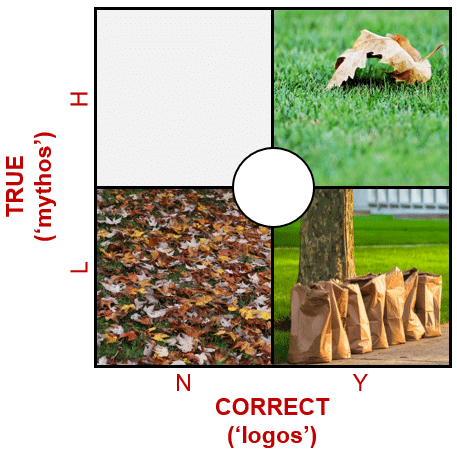My quest for example of the Correct/True matrix continues. Zen Buddhism seems to contain a rich seam of examples. Albeit there doesn’t always appear to be a great deal of consensus among the community about what any of them actually mean. Maybe that’s the point?
Anyway, here’s one of my favourites:
One day, a novice was told that important guests were expected. Immediately, he set about tending the garden. He removed weeds, pruned tree branches and shrubs. He even brushed the moss. Since it was autumn, the ground was untidy with dry leaves. The novice raked the leaves with great zeal and then painstakingly scooped them all into bags.
All this while, the old master was watching him from across the wall. The novice finished with his labour of love. A look of satisfaction spread across his face. “Doesn’t it look beautiful now?” he said, turning to the master.
“Indeed it does,” replied the master, “but something’s not quite right. Here, give me a hand over this wall and I’ll fix it for you.”
Puzzled, the novice did as he was asked. The old master made his way slowly to a tree in the centre of the garden, gripped its trunk and shook it gently, releasing a small scattering of orange, russet and brown leaves onto the freshly tended ground. “There,” he said, “that’s better.”
The novice in this parable thinks his job is to make the garden ‘tidy’. As in, the correct form of a perfectly tended garden should be mess-less. A garden full of fallen leaves is not correct. One that has had all those fallen leaves removed is. But its only when the master shakes the tree that we achieve a scene that is both correct and true. Something like this:

“When people believe that the form is more important than the Truth, they will not find truth, but will stay with form.”
Idries Shah
